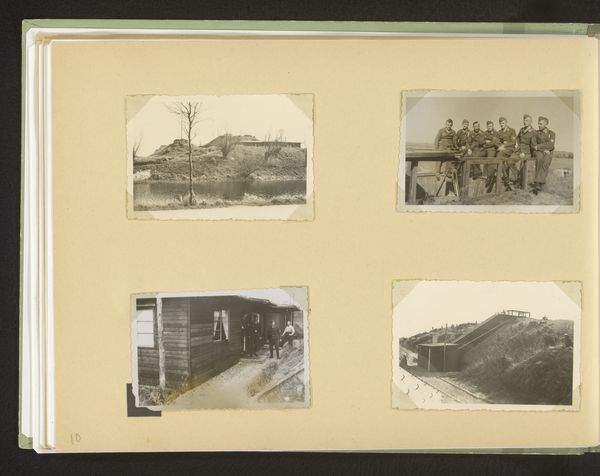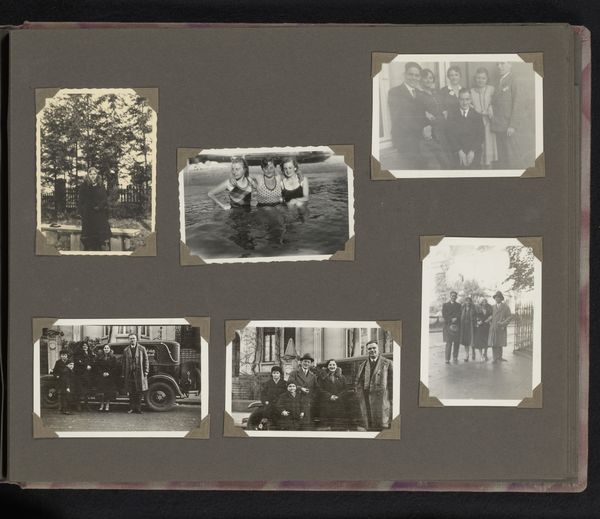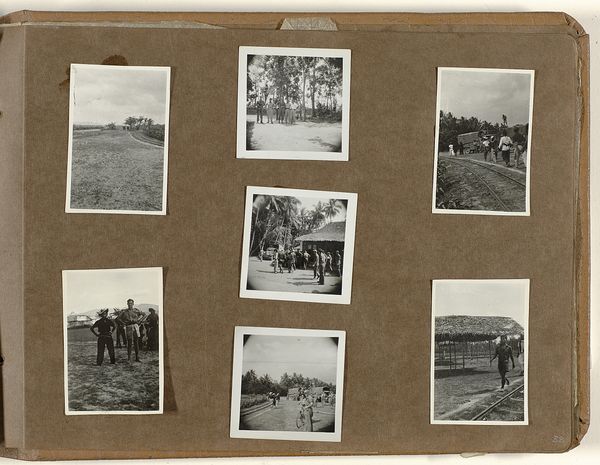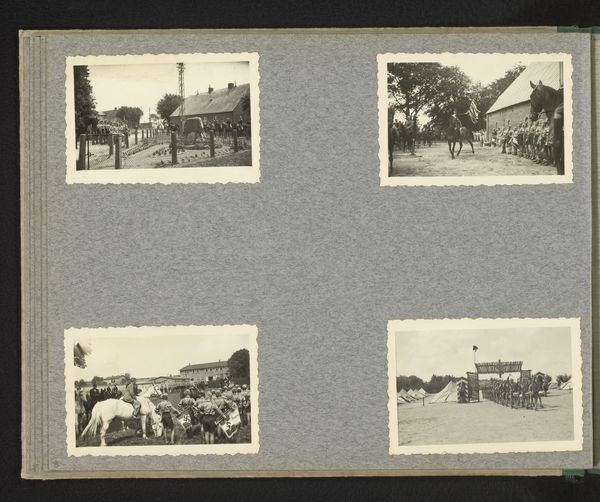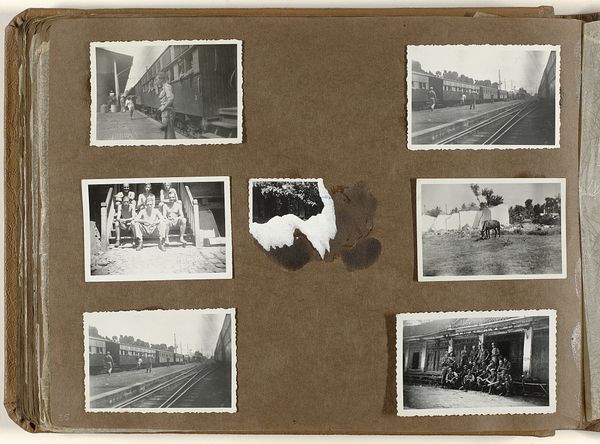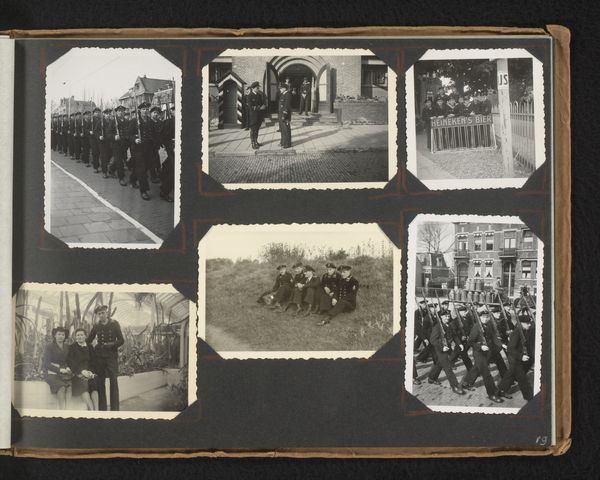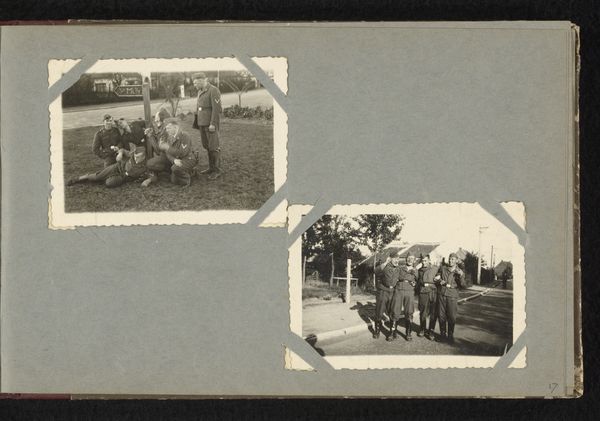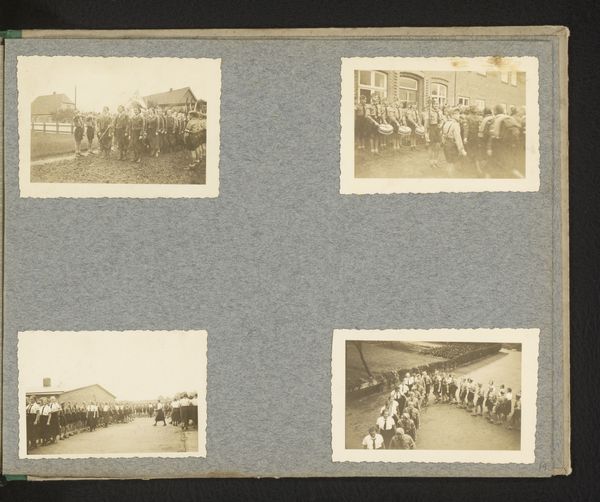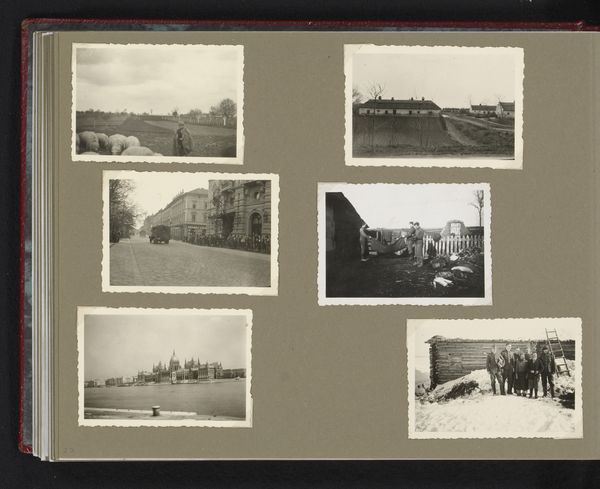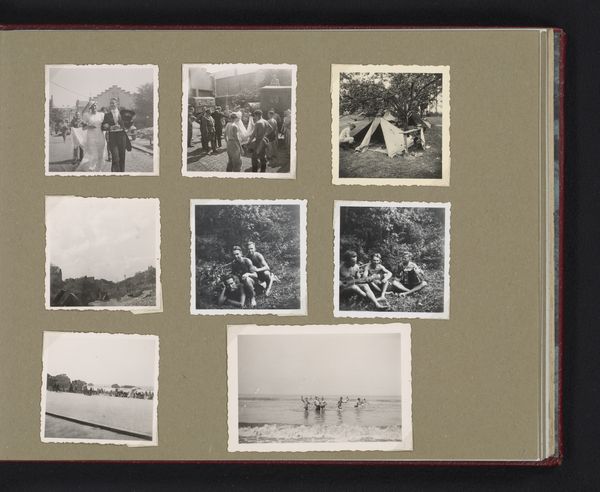
photography, gelatin-silver-print
#
landscape
#
photography
#
gelatin-silver-print
#
genre-painting
Dimensions: height 60 mm, width 90 mm, height 195 mm, width 292 mm
Copyright: Rijks Museum: Open Domain
Editor: This is a collection of gelatin-silver print photographs titled "Omgeving en familie," meaning "Environment and Family," dating from 1940 to 1944. I find the collection to be melancholic and somewhat unsettling, with landscapes and posed family portraits. How would you interpret these images, given the time period they were created? Curator: The album page format tells a story of controlled visual narratives. Photography during the war years served propaganda purposes and preserving personal histories. I see these images existing in the shadow of broader socio-political currents. Who do you think commissioned the photos? Do you think these photographs were part of an effort to document normality in a time of increasing upheaval and scarcity? Editor: Perhaps, although the presentation of posed family portraits beside bleak, empty landscapes evokes a feeling of contrast, like what they wanted to be versus what was happening at the time. Do you think this contrast in itself served a specific purpose? Curator: Exactly. The formal portraits evoke a sense of staged normalcy that starkly contrasts with the isolated landscapes and hint at a deliberate construction of memory. Consider how photography can both reveal and conceal. Perhaps the intent was not only documentation but also a form of psychological self-preservation, reassuring oneself and future generations of continuity amidst instability. What strikes you most about this from a curatorial perspective? Editor: The album forces you to question the agency of the photographer. Was this purely documentation or a form of quiet resistance through the lens? It adds a complex layer to the meaning of “family and environment." Curator: Precisely. This juxtaposition pushes us to think about how we frame these photographic narratives within larger historical dialogues. It is less about individual photographs and more about photography's contested role during a period of political unrest. I’ve gained a lot from examining them together this way.
Comments
No comments
Be the first to comment and join the conversation on the ultimate creative platform.
